Say I have a distribution board where 220VAC comes in and goes into a 220VAC-24DC converter. 24V DC is subsequently fed into a KNX-driven RGBW dimmer which powers a LED strip directly along a 5x1.5 cable (distance of about 5 meters). In fact, the RGBW dimmer acts as a de facto contactor for the converter: if the LED strip is powered, the converter is powered; if the LED strip is not powered, the converter is subsequently not powered. This means the live wire goes into the dimmer, then out to the converter.
My question: do I need a circuit breaker anywhere along this path? Given that LEDs spike at startup, how do I calculate what breaker I need? For example, say I need a breaker for a 150W peak AC-DC converter that feeds 100W of LEDs, should I be going for a 10A type C breaker or something else?
Clarification about the dimmer being a contactor. I've included a picture below to illustrate. The bottom right hand contacts are a breakable circuit path which is only activated when the dimmer is instructed to shine something. Thus, the path of the live wire in the circuit goes like this:
Input -> RGBW contactor in -> RGBW contactor out -> 220-24
Then, assuming the AC-DC converter is powered, the 24V output is then fed into the top contacts of the dimmer, which in turn distributes this energy to the RGBW contacts.

